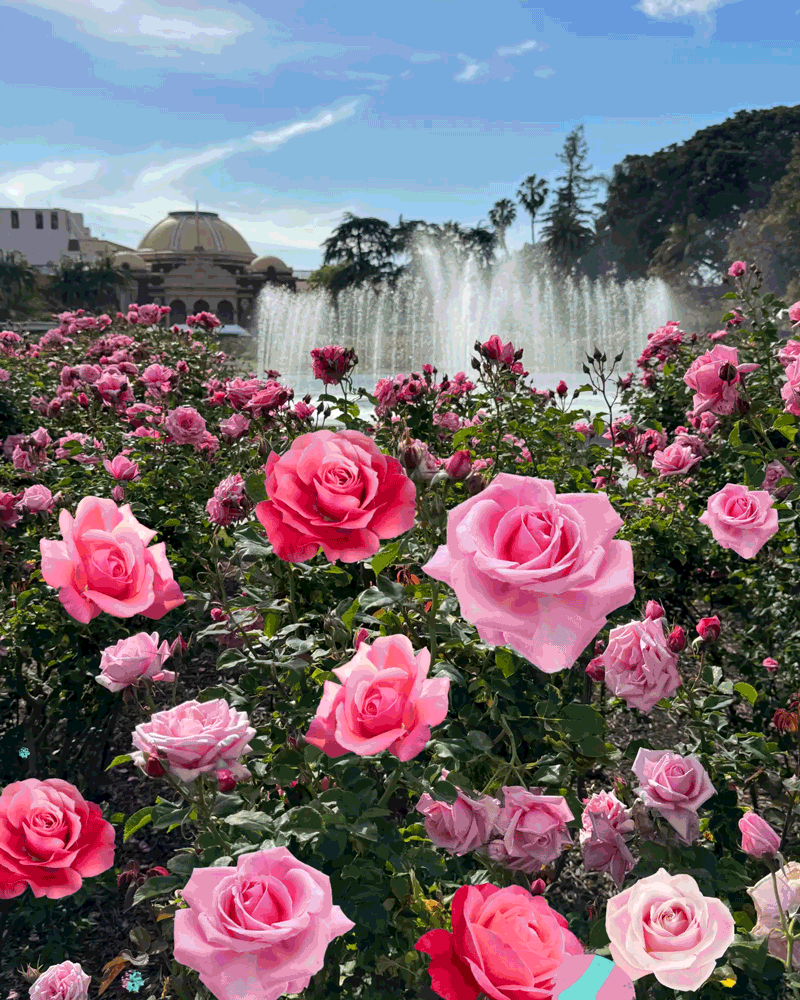HOLLAND : THE WORLD’S LARGEST FLOWER SHOW
- Share via
LISSE, The Netherlands — Waterlogged little Holland with its canals and windmills continues to draw visitors to its floral spectacles-unmatched for their beauty in a land of shocking colors and exotic plant life.-Jerry Hulse, Times Travel Editor
To enter Keukenhof Park is to invite an assault on the senses--rich floral perfumes, cascading water, colorful flower masses arching across manicured lawns and beneath centuries-old trees.
Keukenhof, southwest of Amsterdam near Lisse, lies at the end of a major bulb route in the heart of tulip country. Open from the end of March through the first half of May, it successively highlights crocus, hyacinth and narcissus displays along with early and late-flowering tulips.
Millions of bulb flowers, including more than 500 species of tulips, make the 70-acre park the world’s largest flower exhibition.
With its heather garden and working windmill, greenhouses and roofed-in garden, lakes, fountains, swans and flamingos, Keukenhof offers a soothing escape into a magical world.
The park, created as a showplace by growers, marks just one facet of “The Land of Flowers,” where plant growing represents both a national passion and its largest industry.
The Dutch fill their homes with blossoms and greenery; plant bulbs and shrubs appear on traffic islands and in shopping centers, and other flowers draw attention from balconies and lamp posts.
In Holland, dinner guests always take flowers or a plant to their hosts.
On the business end, the Dutch are the world’s leading exporters of bulbs and flowers. The nation’s enormous horticulture industry deals in blooms, bulbs and nursery plants on a level unmatched in scale or efficiency.
The country, with its severe winters and limited land, isn’t naturally suited for flower-growing, but citizens caught the fever in the 18th Century when seagoing explorers brought back exotic plants from their journeys.
With typical innovation, the Dutch soon specialized in tulips and other bulbs that do well in a cool, damp climate. In the off-season, intensive greenhouse gardening provides flowers that fetch top prices. Dutch greenhouses cover 32 square miles in a country spanning only 16,000 square miles.
In springtime, flower lovers flock to the huge patchwork quilts of color stretching along the coast. Each field is planted in just one color, every flower meticulously in line.
Because the growers seek the bulb and not the bloom, visitors often come across piles of discarded flowers in the fields and are often offered garlands of flowers at roadside stalls.
Holland’s promoters work hard to make touring easy. Signposts mark bulb and tree blossom routes for motorists and bicyclists.
Organized tours abound, too. The Netherlands Railway offers inexpensive combined tickets that include round-trip second-class travel to Haarlem or Leiden, a bus journey to Lisse and admission to Keukenhof. The 3 1/2-hour tour leaves Amsterdam twice a day from March through May.
The trip passes through forested countryside, along dozens of small canals lined with tiny one-room houses and past working bulb fields. The bus tour provides a good view of colorful cities and elaborate mansions that dot the landscape near Lisse.
Budding botanists who wish to expand their knowledge study flowers and plants in depth at 60 centers throughout Holland.
Well-regarded facilities include a botanical garden at Leiden, a tree experimental station at Boskoop, the Hortus de Wolf tropical garden at Haren near Groningen, cut-flower gardens at Rijnsburg and heather gardens in Driebergen.
Greenhouses, where the hothouse and nursery industries raise lilacs, rhododendrons, roses, lilies, gladioli, dahlias and asters, offer blooms all year. Many are open to visitors.
In addition, flower parades and exhibits fill the calendar from spring to autumn.
Tourists can explore yet another aspect of the industry at the many flower markets held throughout Holland.
The 64-acre Aalsmeer auction, a few miles southwest of Amsterdam, welcomes visitors each weekday between 8 and 11 a.m.
The regional cooperative, representing 4,000 growers, sells nearly 9 million cut flowers and more than 600,000 potted plants each day, a thousand million flowers a year.
Visitors study the highly automated mass spectacle from a catwalk overlooking computerized dials that record buyers’ bids and two-tiered computer-controlled carts that move blooms slowly across the floor.
Other auctions are held each weekday morning at Honselersdijk near Rotterdam and at Rijnsburg near Leiden.
Cities with flower markets include Amersfoort, Amsterdam, Delft, Groningen, Haarlem and Utrecht.
The most famous is Amsterdam’s two-block floating flower market, with most stalls aboard boats moored in Singel Canal that rings the city’s oldest section. A jungle of greenery greets buyers and browsers every day except Sunday. (Evenings bring the sparkle of flower boats outlined in lights.)
To learn more about each year’s flower parades, shows and markets, contact the Netherlands National Tourist Office, 605 Market St., Room 401, San Francisco 94105.
More to Read
Sign up for The Wild
We’ll help you find the best places to hike, bike and run, as well as the perfect silent spots for meditation and yoga.
You may occasionally receive promotional content from the Los Angeles Times.






